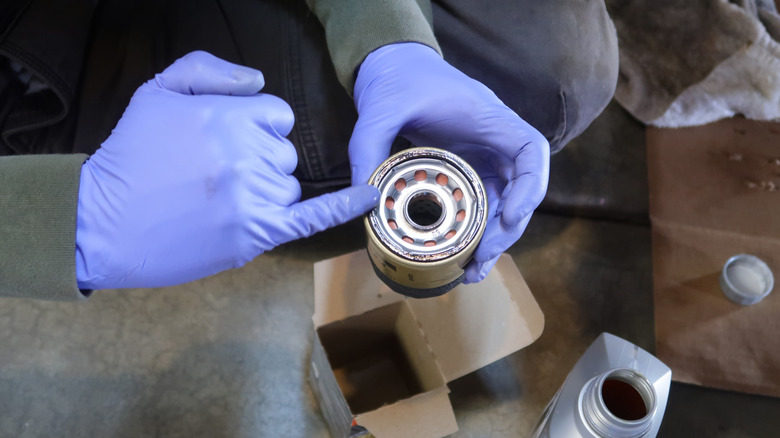How Tight Should Your Oil Filter Be?
It's good practice to replace the oil filter with a new one when changing your car's engine oil. The oil filter is a crucial element of an internal combustion engine. Without it, manufacturers would probably recommend changing the car oil more frequently than the 5,000 to 7,500-mile industry standard. There are synthetic fibers or special pleated paper inside the oil filter that traps and prevents metallic debris and other impurities from re-entering the engine, lengthening the oil's service life while keeping the motor humming as smoothly as possible.
Removing a used oil filter with the proper tools is relatively easy. However, unseating a stuck oil filter is not as easy as it sounds, but it's still doable using a special set of tools and some elbow grease. Then again, questions typically arise when it's time to screw it back on: How tight should it be? Or should I use a wrench to tighten it?
There are no set parameters or torque values for how tight an oil filter should be when installed. Unlike head bolts and other fasteners, which require factory-prescribed torque values when tightening (and a quality torque wrench when doing so), all you need are your hands to install a new oil filter like a professional.
The oil filter should only be hand-tightened
Using a wrench or other tool when installing an oil filter would only lead to overtightening and, given enough time, a stuck oil filter that would be excruciating to deal with, to say the least. Before installing a new oil filter, make it a habit to inspect the seating surface and clean it (when necessary) with a microfiber towel and some WD-40. While at it, make sure the rubber gasket from the old oil filter is not left seated in the housing, which will cause leakage after installing the new filter.
The next step is to apply a thin film of clean oil around the new oil filter to pre-lubricate the rubber gasket. Finally, screw on the new oil filter and tighten by hand. A good rule of thumb is to hand-tighten until it stops turning. Some Honda vehicles have oil filters with triangle markings or the numbers 1, 2, 3, and 4 printed around the oil filter casing so the installer can determine if the oil filter is tight enough.
After hand-tightening the oil filter, screwing back the drain plug, and pouring fresh oil are the final steps. Start the engine, let it warm up a bit, and check under the engine for oil leaks from the drain plug and oil filter. If there are none, close the hood, and you're golden. In conclusion, you're better off following the recommended oil change intervals for the make and model of your car. Refer to the owner's manual, follow it to a T, and avoid skipping oil changes to preserve the integrity of your car's precious engine.

